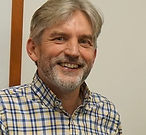Leading Through Coronavirus
- Ian Duncum

- Mar 20, 2020
- 3 min read

I have consulted with around 70 churches in the area of transition and change. COVID-19 is forcing change on the church in so many ways. The key question is: “How do we lead through that change?” Yes, such a change may include a greater embracing of technology and other creative ways of gathering. But to stop there misses the point. William Bridges wrote a book called “Transitions: Making Sense of Life’s Changes.” It’s about a human-centric approach to organizational change.
Bridges explains that things don’t change just because you’re suddenly doing something differently, or you stated that you will. Change and transition are two different concepts that go hand-in-hand. Change can be an external factor (a COVID-19 pandemic, you moved into a new building, your local community has changed). Transition is a psychological and spiritual 3-step process people go through as they internalize and come to terms with their new predicament.
Bottom line: you can’t expect people to behave differently just because their circumstances have changed, when their minds and identities haven’t yet made the leap.
“People expect to be able to move straight from the old to the new. But this isn’t a trip from one side of the street to the other. It’s a journey from one identity to another, and that kind of journey takes time.”
Thinking about transition as the journey from one identity to another helps a lot. Bridges maps out three stages: 1) let go of my old identity, 2) make my way through an uncomfortable ‘neutral zone’, and 3) emerge on the other side with a new beginning and identity taking shape.

Some people are better at transitions (the green arrow in the picture) while others aren’t (red arrow).
So how do we lead through change effectively?
1. Describe the change(s) and why it/they must happen, and do so succinctly -- in one minute or less for each of the key communication modes: a) Big Picture, b) Clear Facts and Essential Details, c) Logical Process, d) People Centred.
Clarity makes a lot of difference to the way people perceive change.
2. Assist leaders and people understand just who is going to have to let go
of what -- what is ending (and what is not) in people's lives, positions and ministries --
and what people (including leaders) should let go of.
3. Make sure that steps are taken to help people respectfully let go of
the past. These may include "boundary" actions (events that demonstrate that change
has come), a constant stream of information, and understanding and acceptance of
the symptoms of grieving, as well as efforts to protect people's interests while they are
giving up the status quo.
In some churches I have invited people to place a stone into a large bowl of water as they prayerfully let go of and “drown” the past (think of crossing the Red Sea in Exodus as a boundary event).
4. Guide leaders so that the details of the change are planned carefully and that
someone is responsible for each detail; that timelines for all the changes are
established; and that a communications plan explaining the change is in place.
5. Walk with leaders and people through the neutral space enabling them to communicate well in ways that keep connections alive and show concern for the congregation. This is where care and listening need to be dialled way up. To keep reiterating the VIP of transition communications:
The Vision: What the problem has been, why we have to do this, what it will look and feel
like when we reach the goal.
Implementation: Step-by-step, how we will get there addressing the needs of the
church as a whole and the individuals within it.
The Part each Person Plays: What each person can (and needs to) do to help us as a church move forward.
6. Problem solve with key leaders to create temporary solutions to the temporary problems and the high levels of uncertainty found in the neutral space. Make sure people are not struggling unnecessarily.
7. Help leaders help people launch the new beginning by articulating the new attitudes
and behaviours needed to make the change work -- and then modelling, providing
practice in, and facilitating those behaviours and attitudes. For example, rather than
announcing a new ministry or leadership team, leaders of transition need to work
through with members the skills and attitudes that such a team needs to have, and
provide the necessary training and resources to develop them. In the current season, this may mean skilling people in the use of technology so that connections are maintained. It may also involve fostering attitudes of service to those in the community that are more vulnerable and isolated, rather than withdrawing in fear.
This is a time for sensitive and strong pastoral leadership. A time for caring for those on our congregations and our local communities. A time for communicating and listening. And a time for bold and creative leadership that enables people to embrace a new identity and vision for life together and local mission, in whatever shape that may emerge over coming months.









Comments